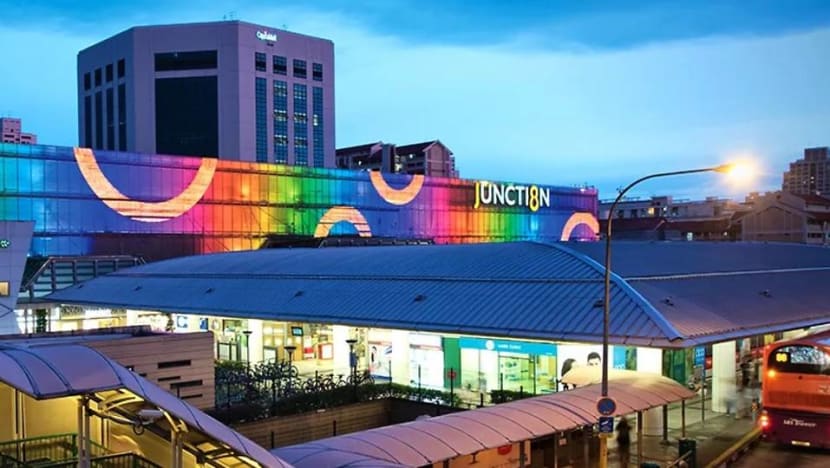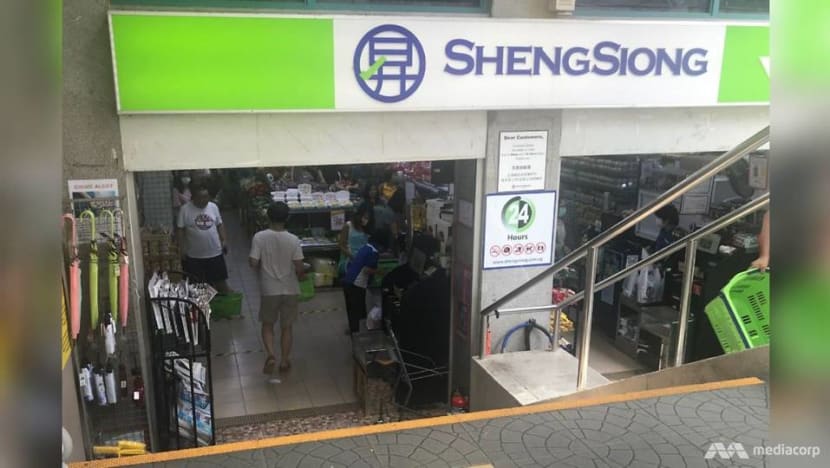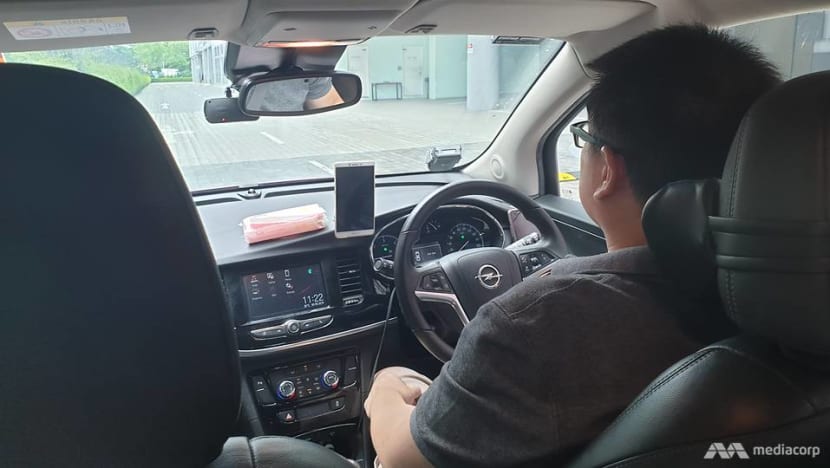commentary Commentary
Commentary: CapitaLand’s restructuring could provide higher returns for shareholders
CapitaLand's restructuring makes it more asset light. This is the Holy Grail of businesses these days, says David Kuo.

A man walks past real estate developer CapitaLand's logo. (Photo: AFP/Theresa Baraclough)
SINGAPORE: CapitaLand has taken the Singapore property sector by surprise by announcing the separation of its property development business and its property investment management business.
Through the restructuring, CapitaLand will combine its investment management platform and lodging business into a new listed company called CapitaLand Investment Management (CLIM).
This unit will also hold the stakes in CapitaLand’s stock market listed real estate investment trusts (REITs) and business trusts.
The other part of CapitaLand’s business, namely, its property development arm, will be privatised as CLA Real Estate Holdings. It will subsequently be fully owned by Temasek Holdings.
SQUARE PEGS IN ROUND HOLES
The separation of CapitaLand into two distinct businesses, while surprising, is not entirely unprecedented.
It is effectively a pigeonholing exercise to realign a disparate collection of entities into two separate companies that should be more focussed. No more forcing of square pegs into round holes.
READ: Commentary: Sea Limited should stick to its core businesses, especially gaming
Something similar happened in Hong Kong last year. Developer Wheelock & Co was privatised in which different parts of the sprawling conglomerate were grouped into three separate businesses.
They comprised a real estate investment company, Wharf REIC, and two property development businesses, namely, Wharf Holdings that will focus on Hong Kong, and China-focussed Wheelock Properties.
The rationale behind the separations of both Wheelock & Co in 2020, and CapitaLand in 2021 is now obvious with the benefit of hindsight.
Property development and property management are as different as chalk and cheese, even though they are both related to real estate.
STRANGE BEDFELLOWS
A property developer constructs buildings with the intention of selling the properties to generate cash that can then be recycled into more construction projects.
Property management, on the other hand, owns properties for the purpose of generating recurring revenue over the long term. The two can make for strange bedfellows.

For instance, it can take years from the start of developing a property to its eventual completion.
During that time, plenty can change such as global economic conditions and prevailing interest rates.
The upshot is that profits from property development are harder to forecast, which could mean that it is not ideal for the fainthearted and impatient investor.
Property management, on the other hand, tends to be more predictable.
READ: Commentary: Furore over The Substation is opportunity for better understanding of arts funding
The capital is used to buy assets that are capable of generating long-term revenue, which can be used to reinvest in more assets to generate more revenue that could help accelerate the growth of the business.
SEEING THE LIGHT
CapitaLand has said that the purpose of the restructuring is to be more asset light. This is the Holy Grail of business management. A business that is light on fixed assets could mean a higher return for shareholders on a number of fronts.
It could mean better returns on assets, higher returns on invested capital and improved returns on shareholder equity, which are some of the key metrics that stock market investors monitor.
Consider supermarket operators such as Dairy Farm International or Sheng Siong. Supermarkets are generally asset-light businesses as they tend to lease, and not own, the properties they retail from.
READ: Commentary: Robinsons shuttered for good. Does Singapore have too much retail space?
Therefore, these businesses are able to generate up to S$2 of sales for every dollar of asset employed in the business.
In the case of Sheng Siong, it even delivered a return of 47 per cent on shareholder funds. They were also able to adapt quickly to changing economic conditions brought about by the pandemic.
What also makes the supermarkets’ business model so attractive to investors is that they have a strong cash flow stream – most of the goods they sell for cash are on credit or consignment and therefore paid only 60 or 90 days later.

In the meantime the cash is ploughed back into the business.
Besides supermarkets, the move towards asset-light appears to be the direction that many businesses are heading, provided they can pull it off, successfully.
Hotels are a good example of companies that have moved from asset-heavy to asset-light.
According to Jones Lang LaSalle, many hotel brand companies have divested from owning real estate to focus on operating hotels.
In 2010, 70 per cent of branded hotels were franchised operations. By 2019, that had risen to roughly 80 per cent.
READ: Commentary: The gig economy – a surprise boost from the pandemic and in Singapore, it’s not going anywhere
Even in Singapore, we have seen how hotel groups such as Marriot and Novotel, among others, operate out of buildings owned by others, based on a lease or revenue-sharing model.
From an accounting perspective, it means that a company is shifting some of its fixed assets from the balance sheet and replacing it with a recurring expense on the income statement.
So, instead of a fixed asset, the company receives cash that could be used for expanding the business. If the cash can be used to grow the business, then the exercise of going asset-light could result in a more efficient operation.
Consider the entrance of ride-hailing companies.
There was a time when someone who wanted to start a taxi business would need to raise capital to buy a fleet of cars that sat on the balance sheet as a gradually-depreciating asset. They would also need to hire drivers to operate those vehicles.
But not anymore. Uber broke the mould and, perhaps, the hearts of cab-company operators at the same time, when it launched its disruptive ride-hailing service.

It convinced car owners to deploy their vehicles to ferry people from one destination to another in exchange for an agreed fee.
All Uber had to do was connect willing drivers with passengers through its proprietary software platform. In exchange for making the connection, Uber would earn a fee. Uber’s business model has spawned copycat operators that now include Grab and Gojek.
NOTHING NEW
Asset-light, might be the buzzword of the day, but it is not a new concept.
In the mid-1990s, Apple almost halved its property, plant and equipment from around US$700 million to around US$318 million by farming out its manufacturing to third parties.
READ: Commentary: Deliveroo’s IPO - like changing tires while driving
Why would it want to tie up its capital in making computers when its expertise was in design and innovation?
Almost immediately, its profit margins improved from mid-single digits to the mid-teens.
Today, Apple’s net margin is in the mid-twenties. Its return on equity is in the high double digits compared to the low double digits it was reporting around 1990.
There are other examples of asset-light business that have disrupted traditional companies. These include car-sharing services, apartment-sharing platforms, music and video streaming providers, fintech, and co-working offices.

Much of this has been driven by a shift in attitude of the market that has prioritised convenience over ownership. The keys are flexibility and freedom from the financial obligations that come with the ownership of assets.
With the advancement of technology, traditional businesses that are asset-heavy cannot expect the successes of the past to be repeated in the future.
For instance, today’s consumers have shown that they no longer want to own a collection of vinyl or a stack of DVDs.
Everything is now stored in the cloud. But companies that still have their heads in the cloud could wake up one day to find that the world is no longer the same place that it was before.
The launch of lyf@SMU by Capitaland’s The Ascott and SMU is a case in point.
It has provided a glimpse of how a WeWork type model could work in the field of higher education. It is still early days yet for the experiment, but a roll-out both locally and in other parts of the world cannot be ruled out.
READ: Commentary: COVID-19 will reshape the Singapore office property market outlook
READ: Commentary: Is Airbnb’s IPO listing this week worth your investment?
Consequently, it is important for businesses to think about moving to an asset-light model before they are made to move. There was a time when vertical and horizontal integration were the buzzwords of the day.
That invariably meant taking on more capital to expand the business.
The question for investors is whether the extra dollar of investment will deliver additional investment returns. It is important to think differently.
That can only happen if key shareholders are ready to make the change.
In the case of Singapore enterprises, it could need Temasek to lead the way.
It is already doing so by giving its nod of approval for the delisting of CapitaLand and the formation of CLIM as well as the recent announced by Keppel to pivot away from its oil and gas business to clean energy.
More changes in the business landscape could be on the way.
David Kuo is the co-founder of The Smart Investor and previously the CEO of the Motley Fool Singapore.















